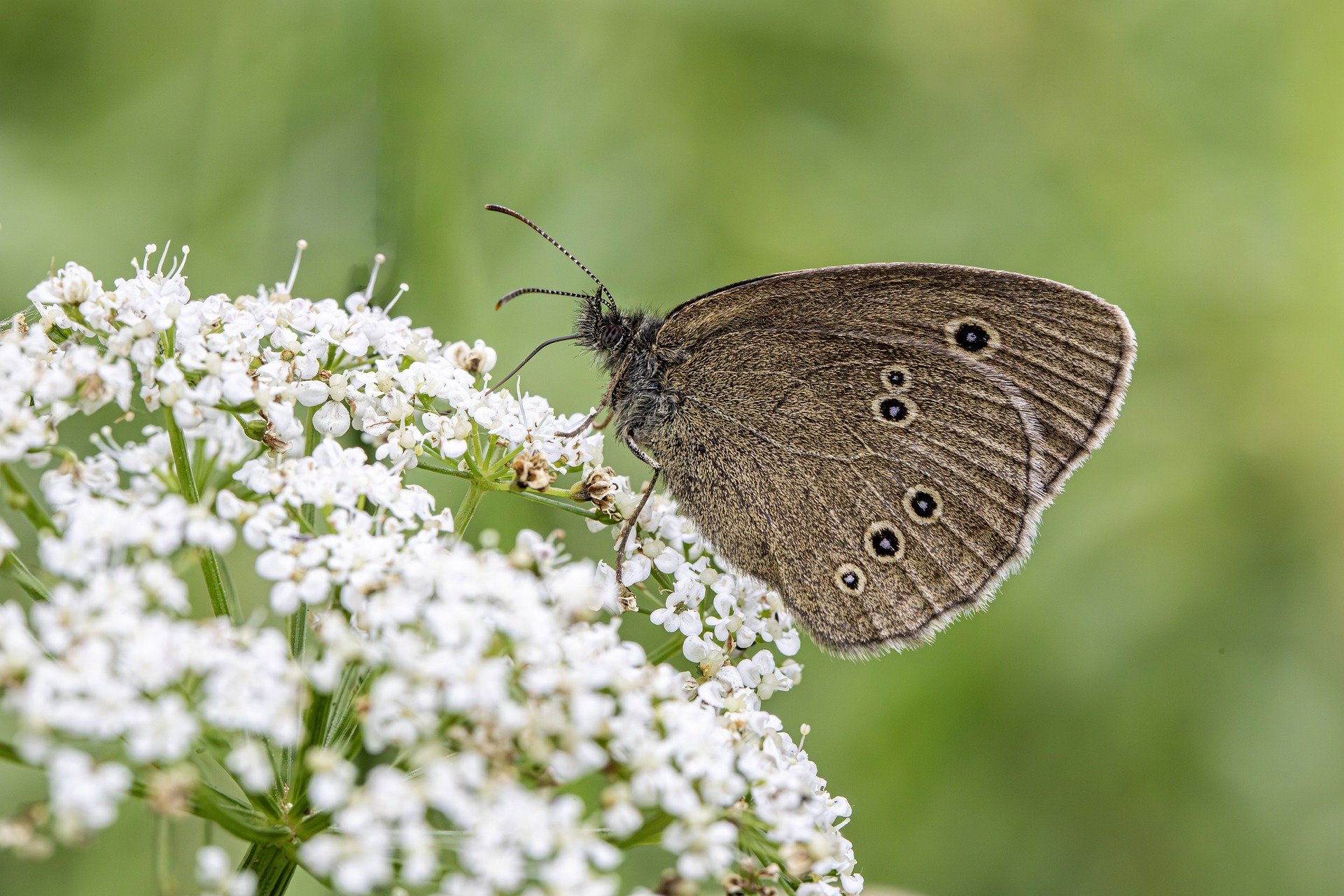Here’s a detailed overview of the Ringlet Butterfly (Aphantopus hyperantus):
🦋 Ringlet (Aphantopus hyperantus)
Taxonomy:
- Order: Lepidoptera
- Family: Nymphalidae (Brush-footed Butterflies)
- Subfamily: Satyrinae (Browns)
- Genus: Aphantopus
- Species: Aphantopus hyperantus
🟤 Identification
The Ringlet is a medium-sized brown butterfly easily recognized by the distinctive ringed eyespots (ocelli) on its wings.
- Upper side: Rich, velvety dark brown with subtle lighter edges; several faint eyespots may be visible in fresh specimens.
- Underside: Paler brown with a line of five or more conspicuous cream-ringed black eyespots on each hindwing — the feature that gives the species its common name.
- Wingspan: 42–48 mm.
In older or worn individuals, the dark color fades to a soft chocolate brown, but the ringed pattern usually remains visible.
🌿 Habitat and Distribution
The Ringlet is widespread across Europe and temperate Asia, reaching from Spain and Britain eastward through Russia and into northern China and Japan.
Preferred habitats include:
- Damp meadows and grassy woodland edges
- Hedgerows, clearings, and field margins
- Lightly shaded and humid environments with tall grasses
It is particularly common in northern and central Europe, but becomes scarcer in arid or alpine regions.
🌾 Life Cycle
The Ringlet has one generation per year (univoltine).
- Egg: Small, whitish, laid singly on grasses.
- Caterpillar: Greenish-brown with faint lines, feeding on fine grasses such as fescues (Festuca), bents (Agrostis), and meadow-grasses (Poa).
- Overwintering stage: The young larva hibernates through winter.
- Pupa: Formed low in the grass in spring.
- Adult: Flies from June to August, depending on region.
Adults are relatively sluggish fliers and are often seen fluttering low among tall grasses, even in cloudy or light rain conditions — behavior unusual for butterflies.
🌍 Behavior and Ecology
- Adults feed primarily on nectar from bramble, thistle, wild privet, and meadow flowers.
- Males patrol low vegetation searching for females.
- Despite their dark coloring, Ringlets are tolerant of low light and cooler temperatures, often flying when other butterflies rest.
⚙️ Special Adaptations
- Dark wings absorb warmth, allowing activity in cloudy weather.
- Cryptic underside pattern provides camouflage when resting.
- Flexible flight behavior suited to shaded, humid microclimates.
🌍 Conservation Status
The Ringlet remains common and widespread in much of its range, though it can decline where intensive mowing or drainage removes tall grass habitats.
Conservation measures focus on maintaining unimproved meadows and natural field margins with diverse grasses.
📏 Key Facts
- Wingspan: 42–48 mm
- Color: Velvety dark brown with ringed eyespots
- Flight period: June–August
- Host plants: Fine grasses (e.g. Festuca, Agrostis, Poa)
- Habitat: Damp meadows, woodland edges, hedgerows
- Range: Europe to northern Asia
- Status: Least Concern
Views: 1752
Subscribe to the newsletter:
